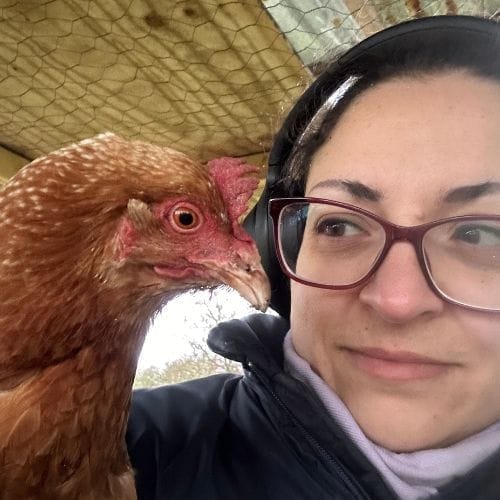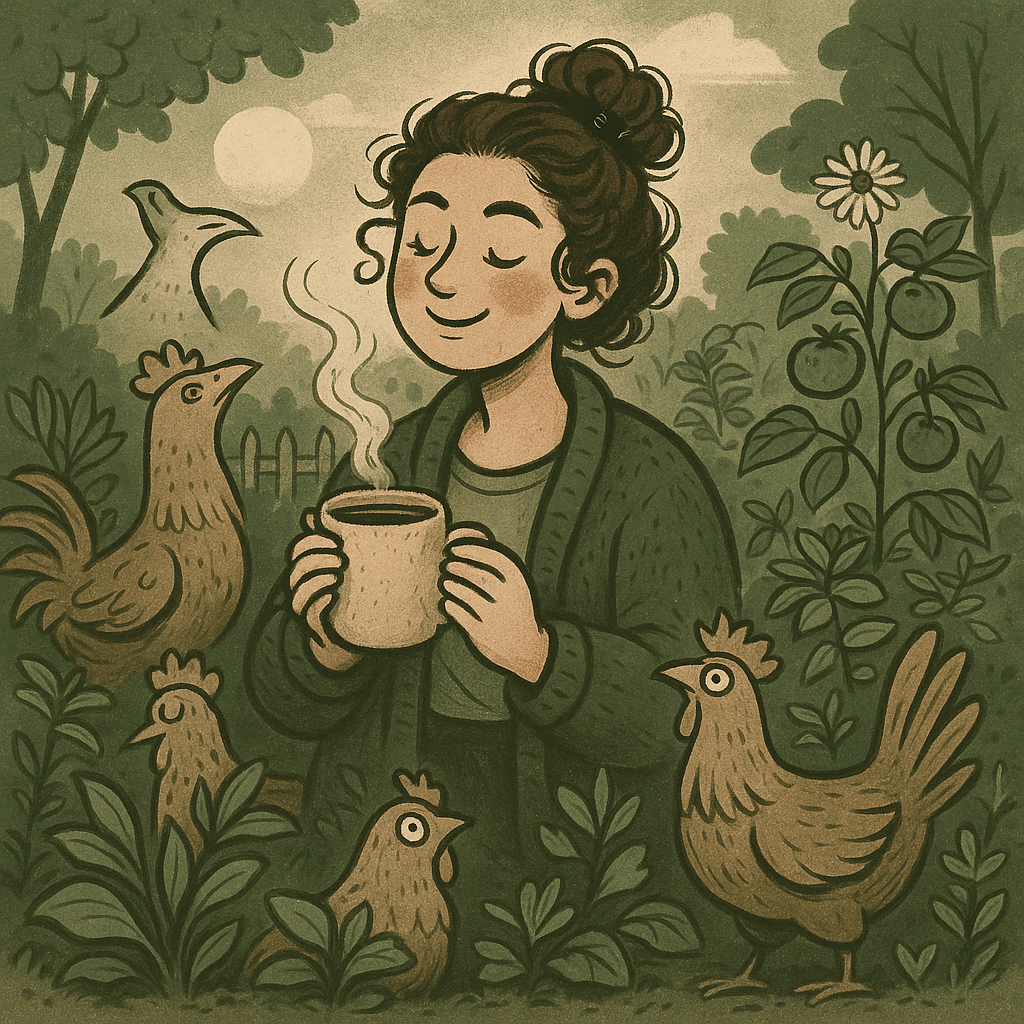
This site uses affiliate links and I may earn a small commission when you use my links and make a purchase without incurring additional fee yourself. Many thanks for supporting this website.
Please click here for more details.
How to Keep Chickens Warm and Laying Eggs in Winter
When the mornings are frosty, your coffee steams in the kitchen window, and the hens are looking at you like “scusa… where’s the central heating, human?” you know winter chicken-keeping season has arrived.
Cold weather doesn’t just mean frozen waterers and muddy boots — it also means fewer eggs in the basket. Shorter days and chilly nights make hens slow down, and sometimes they stop laying altogether. But don’t worry. With the right setup, you can keep your flock warm, healthy, and laying (at least enough eggs to make lasagna on Sunday).
Here’s how.
How to Keep Chickens Warm and Laying Eggs in Winter
Why Chickens Struggle in Winter
Chickens aren’t as fragile as they look — after all, their feathery coats are basically designer down jackets. Still, winter brings two big challenges:
Less daylight = fewer eggs. Hens’ laying cycles are triggered by light. Fewer daylight hours tell their bodies to take a seasonal break.
Cold temperatures = energy diversion. Instead of putting energy into eggs, hens use calories to stay warm.
Dampness & drafts = stress. Cold air is one thing, but moisture and sudden chills can lower immunity and invite illness.
Understanding this balance is the first step: your goal isn’t to create a sauna, but to help hens cope naturally.
Preparing the Coop for Winter
Think of the coop like a cozy mountain cabin: warm enough to stop shivering, but fresh enough so you don’t choke on woodsmoke.
Insulate wisely. Use straw bales against coop walls, cardboard panels, or even bubble wrap. Just don’t block air circulation.
Mind the ventilation. Chickens release lots of moisture when they breathe. Without airflow, condensation builds and frostbite risks rise.
Draft-proof doors & windows. Patch obvious gaps, but allow steady top ventilation.
Deep litter method. Leave bedding layers to build up over winter — it insulates and generates gentle warmth as it composts.
Feeding Chickens for Cold Weather Energy
Calories are the currency of warmth. In winter, hens need extra fuel.
Evening corn. Cracked corn before roosting keeps their little ovens burning overnight.
Protein boosters. Black oil sunflower seeds, mealworms, or peas help maintain egg production.
Warm mash. A bowl of soaked pellets with oats or kitchen scraps makes a belly-warming supper.
Fresh water, always. Frozen drinkers are the enemy. Use rubber bowls, tip ice daily, or add a heated base if possible.
The Role of Light in Egg Production
Egg laying is tied directly to the sun. Hens need around 14–16 hours of light to keep laying steadily.
Artificial lighting. Use a low-watt bulb on a timer in the morning, not at night. This mimics natural sunrise.
Balance is key. Forcing constant production without rest can shorten a hen’s overall laying life. Sometimes fewer eggs in winter is healthier long term.
Safe Heat Options (and Why You Don’t Always Need Them)
Here’s the truth: most healthy hens don’t need a heater. Their feathers, roosting huddles, and metabolism keep them snug.
Avoid heat lamps. They’re a fire hazard and create dangerous temperature swings.
Better alternatives. Flat-panel radiant heaters or heated perches are safer.
Natural comfort. Pile straw in nest boxes, add roosting bars at different heights, and let hens cuddle together.
Encouraging Egg Production Naturally
Eggs in winter are a bonus, not a guarantee — but you can help your flock along.
Winter-hardy breeds. Rhode Island Reds, Sussex, and Plymouth Rocks handle cold well.
Collect eggs often. They can freeze and crack in the nest.
Supplements. Offer calcium (crushed oyster shells or baked eggshells) to keep shells strong.
Stress-free environment. Protect from predators, overcrowding, and boredom. Happy hens = better layers.
Extra Comfort & Care
Winter is hard on both flock and farmer — but a little TLC goes a long way.
Frostbite prevention. Rub a thin layer of Vaseline on combs and wattles in extreme cold.
Boredom busters. Hang a cabbage piñata, scatter scratch grains, or give them a pile of leaves to dig through.
Bonding moments. Chickens often calm down in winter, so it’s a great season to hand-feed, handle gently, and strengthen trust.
Common Mistakes to Avoid
Even well-meaning keepers slip up. Here’s what not to do:
Overheating the coop. Hens need acclimatization, not constant heat.
Ignoring frozen water. Dehydration is more dangerous than cold.
Blocking ventilation. Damp, stale air is a bigger killer than drafts.
Overfeeding treats. Yes, chickens love pasta, but too much spoils egg production and adds unhealthy weight.
Final Thoughts
Your hens don’t expect luxury, just security. Give them a draft-free, dry coop, plenty of calories, a little extra light, and enrichment, and they’ll stay healthy through the coldest months.
Eggs may slow down — and that’s natural. But with care, you’ll still collect enough for carbonara or a Sunday frittata.
And remember: if egg baskets look empty, pour yourself a glass of wine and remind yourself — even hens deserve a winter break.

Zia Paola
Zia Paola is a burnout survivor, chicken enthusiast, and former veterinary surgeon turned digital mischief-maker. She writes from her semi-chaotic smallholding in the UK, where she splits her time between unhinged chickens, rustic recipes, and helping others reclaim their lives from hustle culture. You can find her ranting lovingly about slow living, food, and freelance freedom at www.badinfluenzia.com.

Get mildly chaotic life advice, anti-burnout rants, and unsolicited chicken wisdom delivered straight to your inbox. No fluff. Just feathers.
Created with ©systeme.io



